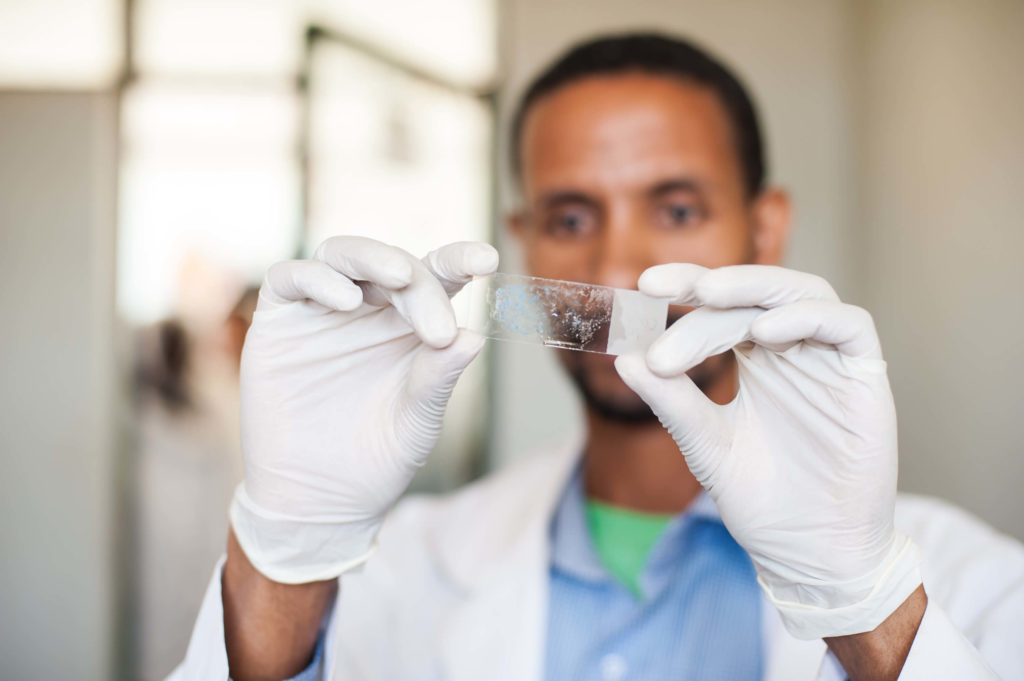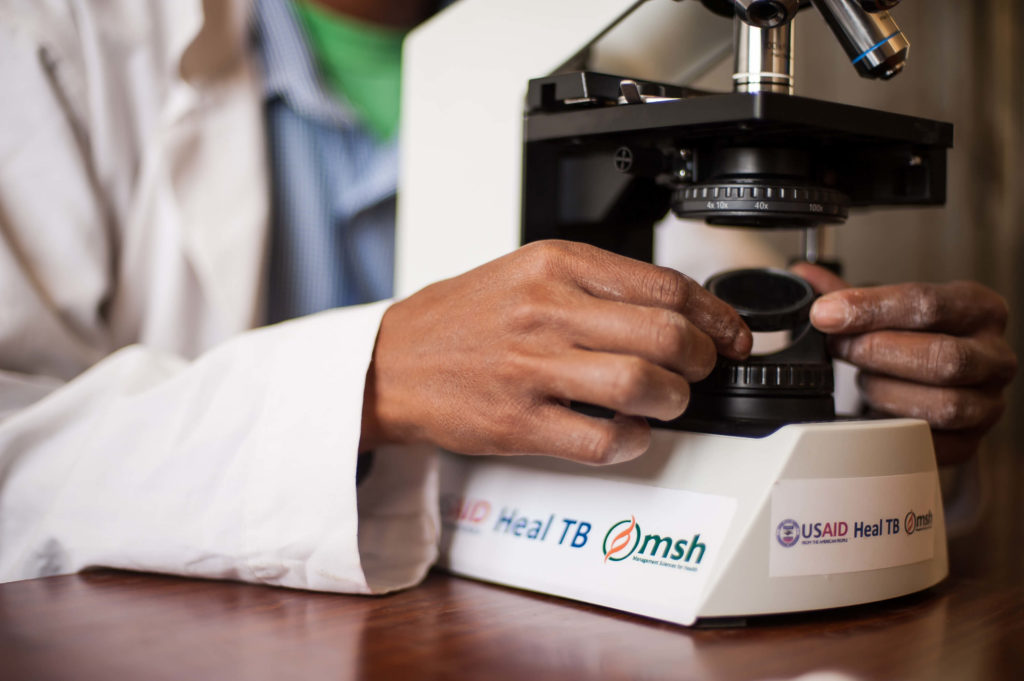To Tackle Tuberculosis, a Focus on Key Populations Drives Progress in Ethiopia
To Tackle Tuberculosis, a Focus on Key Populations Drives Progress in Ethiopia

The history of tuberculosis (TB) inflicting suffering dates to ancient times, with fossils suggesting the bacterium even infected dinosaurs.
Only COVID-19 led TB to lose its distinction as the leading infectious disease killer in the world. The pandemic also derailed nearly two decades of progress that saw TB mortality decline amid renewed public investment and novel interventions and technology that had helped tame its spread.
As health systems struggled to beat back COVID-19, global TB deaths rose more than 5% to 1.5 million in 2020 from the prior year—the first annual increase since 2005.
TB is an opportunistic airborne infection that spreads rapidly by those infected—who are often not aware that they are—by coughing and even speaking. It thrives in crowded spaces like prisons, poorly ventilated areas like mines, and among those with weakened immune systems such as individuals living with HIV.
Vulnerable populations bear the brunt of TB infection and death. So it makes sense that halting the spread in these groups can help pave the way to ending the disease. We won’t win the fight against TB if we don’t figure out how to control it among these key populations.
Ethiopia, home to a cross section of such groups, can serve as a useful case study to examine the efficacy of tailored interventions. The East African country is among a handful that bucked the global TB trend in 2020, achieving the World Health Organization’s End TB Strategy milestone of a 20% reduction in incidence between 2015 and 2020.
Thanks to the steadfast support of the US Agency for International Development, MSH has been helping Ethiopia’s Ministry of Health fight TB in the country since 2011. We’ve approached the battle with a laser-like focus on these special populations.
Here are some takeaways from our experience in Ethiopia over the years, which may be applied to other countries with vulnerable populations.

Measure for action
The first step is defining these key populations. Ethiopia had identified several groups at greater TB risk: the elderly, children, and those living with HIV.
Building on that, MSH partnered with health authorities and other community stakeholders to systematically map all of Ethiopia’s regions for key populations.
They used three criteria to categorize the groups: increased exposure to TB due to where they live or work, limited access to quality TB services, and increased risk of TB because of biological factors that compromise immune function.
This mapping identified several key populations, such as children, people with diabetes, those living with HIV, and malnourished patients. In addition, prisoners, the urban poor, refugees, homeless people, “holy water” attendants, miners, university students, and the elderly were identified at the community level.
MSH also helped determine the numbers-needed-to-screen to find one TB case—an indicator used to prioritize populations for tailored interventions. The metric was lowest among residents at missionary centers and prisoners, indicating the need to target these key populations first.
The analysis yielded nine newly designated groups, which were added to Ethiopia’s health information management system for the first time in 2021. This tracking will allow better gauging of progress and more cost-effective use of resources.
While the most vulnerable populations will, of course, vary across countries, such an exercise could help rationalize resources in other countries with a high TB burden.
Tailor screening and treatment
Once key populations are identified, a targeted approach to screening, prevention, and treatment is required.
In Ethiopia, basic primary health care happens at hospitals, clinics, and other traditional health centers. But institutions such as prisons and schools—where many key populations vulnerable to TB are located—have clinics, too. In 2020, MSH worked to redefine primary health care units to include clinics in congregate settings such as prisons. This, in turn, facilitated the extension of integrated TB screening services as part of routine health care delivery in such settings. With this change, training, mentoring, and supportive supervision now extend to staff at institutions with key populations.
Primary health care systems in countries with a high TB burden and a significant number of special populations should consider including routine TB services as part of their essential package of services.
However, not all special populations are found in congregate settings.
A campaign-based screening approach makes more sense for those moving about, like individuals without homes, internally displaced persons, and contacts of TB cases.
MSH trained clinicians and community workers to reach out to and screen these populations in Ethiopia.

Due to conflict, natural disasters, and the pandemic, internally displaced persons are an emerging vulnerable population for TB infection and other diseases in Ethiopia and many other countries. They should thus be on the list of key populations. This may require revision of the 2018 key population framework in Ethiopia.
Other countries with a high TB burden should consider a special focus on these groups as well.
Finally, controlling the spread of any infectious disease requires paying special attention to health workers, for whom TB transmission is a clear professional risk. Health facilities should be supported to adopt regular and confidential TB screening for health care providers.
As the incidence and prevalence of TB in the general population declines in Ethiopia, prevention and control tailored to those most vulnerable, underserved, and at risk can help move the needle further in the right direction in the fight to wipe out TB once and for all. Many of these lessons are surely applicable to other countries battling the disease.